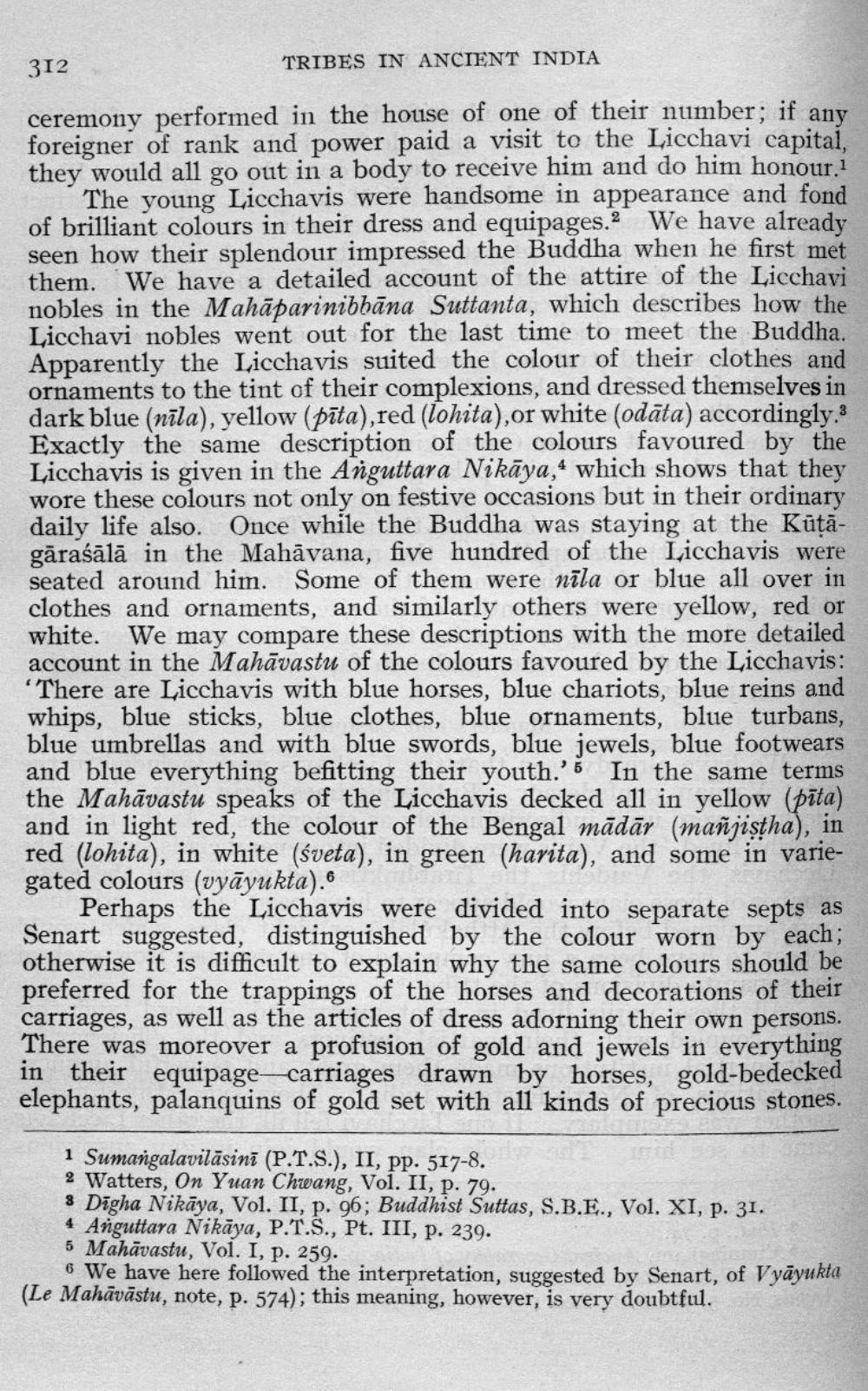________________
312
TRIBES IN ANCIENT INDIA
ceremony performed in the house of one of their number; if any foreigner of rank and power paid a visit to the Licchavi capital, they would all go out in a body to receive him and do him honour.1 The young Licchavis were handsome in appearance and fond of brilliant colours in their dress and equipages. We have already seen how their splendour impressed the Buddha when he first met them. We have a detailed account of the attire of the Licchavi nobles in the Mahaparinibbana Suttanta, which describes how the Licchavi nobles went out for the last time to meet the Buddha. Apparently the Licchavis suited the colour of their clothes and ornaments to the tint of their complexions, and dressed themselves in dark blue (nila), yellow (pita), red (lohita), or white (odata) accordingly.3 Exactly the same description of the colours favoured by the Licchavis is given in the Anguttara Nikaya, which shows that they wore these colours not only on festive occasions but in their ordinary daily life also. Once while the Buddha was staying at the Kuțăgaraśālā in the Mahāvana, five hundred of the Licchavis were seated around him. Some of them were nīla or blue all over in clothes and ornaments, and similarly others were yellow, red or white. We may compare these descriptions with the more detailed account in the Mahavastu of the colours favoured by the Licchavis: "There are Licchavis with blue horses, blue chariots, blue reins and whips, blue sticks, blue clothes, blue ornaments, blue turbans, blue umbrellas and with blue swords, blue jewels, blue footwears and blue everything befitting their youth.' In the same terms the Mahāvastu speaks of the Licchavis decked all in yellow (pīta) and in light red, the colour of the Bengal madar (mañjiṣṭha), in red (lohita), in white (sveta), in green (harita), and some in variegated colours (vyāyukta).
Perhaps the Licchavis were divided into separate septs as Senart suggested, distinguished by the colour worn by each; otherwise it is difficult to explain why the same colours should be preferred for the trappings of the horses and decorations of their carriages, as well as the articles of dress adorning their own persons. There was moreover a profusion of gold and jewels in everything in their equipage carriages drawn by horses, gold-bedecked elephants, palanquins of gold set with all kinds of precious stones.
1 Sumangalavilasini (P.T.S.), II, pp. 517-8.
2 Watters, On Yuan Chwang, Vol. II, p. 79.
3 Digha Nikaya, Vol. II, p. 96; Buddhist Suttas, S.B.E., Vol. XI, p. 31.
4 Anguttara Nikaya, P.T.S., Pt. III, p. 239.
5 Mahāvastu, Vol. I, p. 259.
6 We have here followed the interpretation, suggested by Senart, of Vyayukta
(Le Mahāvāstu, note, p. 574); this meaning, however, is very doubtful.




